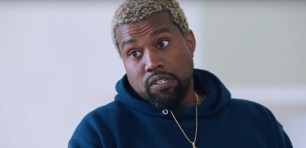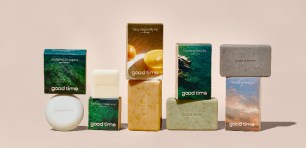
Source: YouTube
It’s one of the first rules of marketing: to capture people’s imagination, you must first capture their attention. Millions of years of evolution have left humans hardwired to notice what’s different, which is why brands that stand out from the crowd also stand to reap massive rewards.
Searching for points of difference is nothing new. Many of my early career memories involve over-excited marketers introducing their breakthrough yoghurts made with new sweetening agents, pasta sauces with marginally chunkier (or less chunky) vegetables and dishwashing liquids in bottles with ‘truly revolutionary’ caps.
While these may well have been big news for the category, the inward focus made it easy to forget how small a role our category — and, indeed, our brand — played in the life of the average punter. All too often, the groundbreaking, earth-shattering, ‘now fully organic’ salad dressing was just another plastic bottle of viscous liquid amongst 17 other plastic bottles of viscous liquid in aisle four.
It’s easy to call shots from the outside. Differentiate or die! Be brave! Subvert the norms! Defy convention! Rip up the category playbook!
But once you’ve ripped it up, then what?
How Liquid Death broke all the rules
Much lauded, death-themed, canned water brand Liquid Death Mountain Water has built an incredible brand and successful business by not just ripping up the playbook, but by borrowing one from a completely different category.
Launched in Los Angeles in January 2019 with the tagline “Murder Your Thirst”, Liquid Death began selling what is essentially water-in-a-can via its website. In just under four short years, the brand is on track for annual revenue north of $US120 million, has amassed over 1.3 million Instagram followers and has just completed its second capital raise at a valuation of $US700 million.
Founder Mike Cessario, a former advertising creative director, brought the brand to life by breaking all the rules in the aspirational health and wellness category.
Before Liquid Death’s foray into the market, water brands were almost indistinguishable: the same or mildly different plastic or glass bottles featuring pastel blue and pink logos, a wafty, holier than thou tone of voice, mountain peaks and trickling springs, spruiked by impossibly good-looking athletes and fitspo models with impossibly hydrated skin.
Enter Liquid Death.
From its quirky, rebellious messaging to who it sponsors, and the content they produce, it doesn’t feel like the brand should be in the same universe, let alone the same aisle as Evian, Dasani or the bland ocean of branded water competitors.
Instead, using an extremely bold marketing approach, Liquid Death took inspiration from the heavy metal and punk rock aesthetic, targeting an entirely different segment of the market: young men who previously might only have drunk water at the gym.
It seems kind of obvious, right? If you’re looking to sell to a group of people that haven’t been targeted before, take a category that successfully targets them and (respectfully) beg, borrow and steal whatever you can.
Liquid Death has done this by honing in on categories that traditionally target young men, such as energy drinks, craft beer and punk, brilliantly repurposing a formula that’s already proven to work. You can see the playbook in action across Liquid Death’s self-aware brand personality, metal-inspired art direction, tallboy beer can packaging, and, crucially, its shock and awe, social media content.
How to create a cult brand
Using the power of story, Liquid Death ultimately morphed social first, entertaining content into a powerful cult brand. At the same time, it’s taking the piss out of branding and trolling earnest marketers like you and me. The brand’s first ad has clocked almost 5 million views on YouTube, in no small part by name-checking ‘a bunch of marketing f*c*bois’, who have tricked consumers into thinking water is ‘just some girly drink for yoga moms with cute brand names and dainty little bottles’. In contrast, they position water as the deadliest stuff on earth, Liquid Death, which kills thousands of innocent surfers, snowboarders and kayakers every year. We then pan out to see the attractive female presenter waterboarding a suited man (surely a marketing exec?) taped to a trestle table.
The brand soon found its metal-man tribe on social media feeds, not by being in the business of selling water but by making engaging, distinctive, irreverent content. Its posts are steeped in sarcasm and often feature record sleeve-inspired graphics complete with bloodied bodies and severed heads. At the same time, Liquid Death set about sponsoring punk and metal tours, all while creating a series of ‘born to be viral’ stunts, including selling a limited range of skateboard decks painted using real blood from skate legend Tony Hawk.
This kind of content appealed to its core audience, creating a vast halo effect for the brand. This cognitive bias causes us to take an initial, positive impression of a person, product, or brand and apply it broadly to encompass their entire being. Suddenly cool kids everywhere were drinking water from a tallboy that looked like a beer can.
Now the brand’s feed includes professional skateboarders supergluing Liquid Death cans to the roof of their cars and rapper Whiz Khalifa and his son chugging cans of Liquid Death on stage.
By marketing water in a way that’s never been done before, Liquid Death tapped directly into a proven psychological quirk known as the Von Restorff effect (aka the isolation effect, aka the bizarreness effect). This phenomenon describes our tendency to remember the thing that stands out from the crowd. Simply put, we are drawn to the unusual. The water category doesn’t get more unusual than Liquid Death.
Scratch below the hardcore surface, and the brand has also made a wonderful sustainability play without using the usual environmental tropes. For example, their #DeathToPlastic mantra extols aluminium as infinitely recyclable, and the Cutie Pollutie plush toys (“Adorable ocean friends that have been mutilated by single-use plastic”) available on Liquid Death’s official merch store raise funds for fighting ocean pollution.
So if you’re a consumer standing in the bottled water aisle, confronted by a wall of choice and a dozen of products that all taste the same, Liquid Death’s striking can and the vague memory of a video on social media that made you chuckle the week before, have proven to be more than enough for you to be sold.
And that is differentiation at its finest.
Handpicked for you

“Farfetched”: Why Kanye’s court case against a Melbourne burger joint will likely fail, says lawyer



COMMENTS
SmartCompany is committed to hosting lively discussions. Help us keep the conversation useful, interesting and welcoming. We aim to publish comments quickly in the interest of promoting robust conversation, but we’re a small team and we deploy filters to protect against legal risk. Occasionally your comment may be held up while it is being reviewed, but we’re working as fast as we can to keep the conversation rolling.
The SmartCompany comment section is members-only content. Please subscribe to leave a comment.
The SmartCompany comment section is members-only content. Please login to leave a comment.